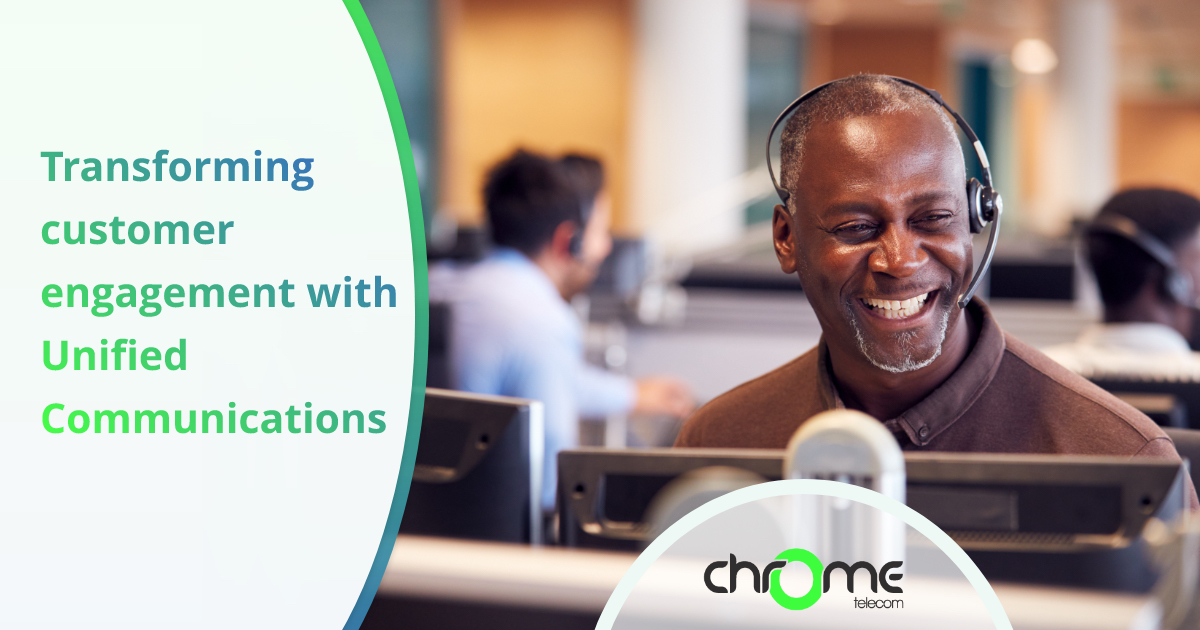Unified Communications platforms are perhaps the best tool to help you maintain and improve your customer service and engagement levels, promoting close collaboration and effective communication across your business.
This blog post will explore 5 of the most important features of Unified Communications systems for customer service.
-
On-hold marketing
Our Unified Communications systems provide ample opportunities for you to inform callers about your latest offers or changes to your opening hours.
While UC minimises the time callers spend on hold, a brief wait is sometimes unavoidable. Endlessly repeating hold music serves no purpose for your brand, and can often frustrate callers. So why not replace it with professionally recorded messages to play while your customers wait?
Not only can on-hold messages keep your callers up to date with all your great deals, but they can also help answer many common questions. Marketing messages can be shuffled with informative FAQ-style recordings to keep your callers engaged at the same time as improving the efficiency of your customer service operations.
-
Intuitive auto-attendants
Our professional recording services can also be applied to the advanced auto-attendants included with all our UC systems.
Auto-attendants are ubiquitous, but they’re rarely used as effectively as they could be. Our experts can help you design a menu structure that’s simple and fast to navigate, routing your callers to the right teams every time.
With more widespread use of AI, deep learning and high quality VoIP audio codecs, voice recognition is far more accurate than ever before. Our systems can integrate with third-party voice recognition modules through advanced APIs. Combine voice recognition with extension dialling and multi-level menu support, and your auto-attendant will be seamless and efficient, no matter how big your organisation.
Of course, the net effect is to eliminate customer confusion and frustration. How many times have you called a bank or insurance company only to find you’ve pressed the wrong button and ended up in a different department? The features of our auto-attendants, and our menu design expertise, ensure your customers never end up in the wrong queue.
-
Remote working
Did your customer service take a hit when you started working from home?
Fortunately, our UC mobile and desktop apps kept all our staff connected, making the transition to remote working far easier to manage than it could have been. Now that lockdown restrictions are easing, we’re certainly looking forward to returning to the office, but we love the lasting flexibility that UC has created.
Responsive status information and presence panels show you where all your colleagues are working from at a glance, whether they’re in the office, at home or even working from a cafe.
Even better, there’s no need to sacrifice any functionality to enable remote working. All of the features you use from your office PC or desk phone are available to you at home on your mobile, tablet, laptop or desktop.
So how does this help your customers? Well, it’s simple. UC helped us transition to remote working at extremely short notice without any significant impact to our customer service. Thanks to the hard work of our staff and the inherent flexibility of UC, we were able to work as effectively from home as we did in the office.
-
Powerful analytics
UC systems like ours include state of the art statistics and analytics modules. Taking a deep dive into your call stats lets you identify trends. The powerful analytics tools project these trends into the future. The unmatched predictive power of UC can tell you how many calls to expect, and therefore how many staff you’ll need to be available.
It can be truly transformative, bringing clarity and far more certainty to your shift planning. The benefits to your customers here are clear; used to their full extent, analytics tools help you deploy your resources to where they are most needed.
-
Deep integrations
So now that you know how many staff members you’ll need for each shift, how do you streamline their workflows?
Unified Communications systems like ours include powerful APIs, allowing them to integrate with a huge range of third-party CRMs. With a full integration, your staff will be able to complete even more tasks from within your CRM. For example, our system can be configured to sign your staff in to all their queues whenever they log in to your CRM.
The best features of CRM integration are undoubtedly screen popping and click to dial.
Click to dial does exactly what you’d think. One click in a client’s record in your CRM database initiates a call to their preferred contact number.
Screen popping is effectively the reverse; UC sends details of incoming calls to your CRM, allowing it to display any account details on the screen of the staff member that answers the call. Think about it – instead of spending the first few minutes of each call tracking a customer account down, you could greet them by name. Screen popping, and indeed CRM integration as a whole, increases the efficiency of your in-call and post-call processes. This reduces the amount of time your callers spend on the phone, improving your overall customer service levels.
Do you want to find out more about Unified Communications and all our other great business communication services? Get in touch with the team today on 03333 212 707 to see our systems in action.
